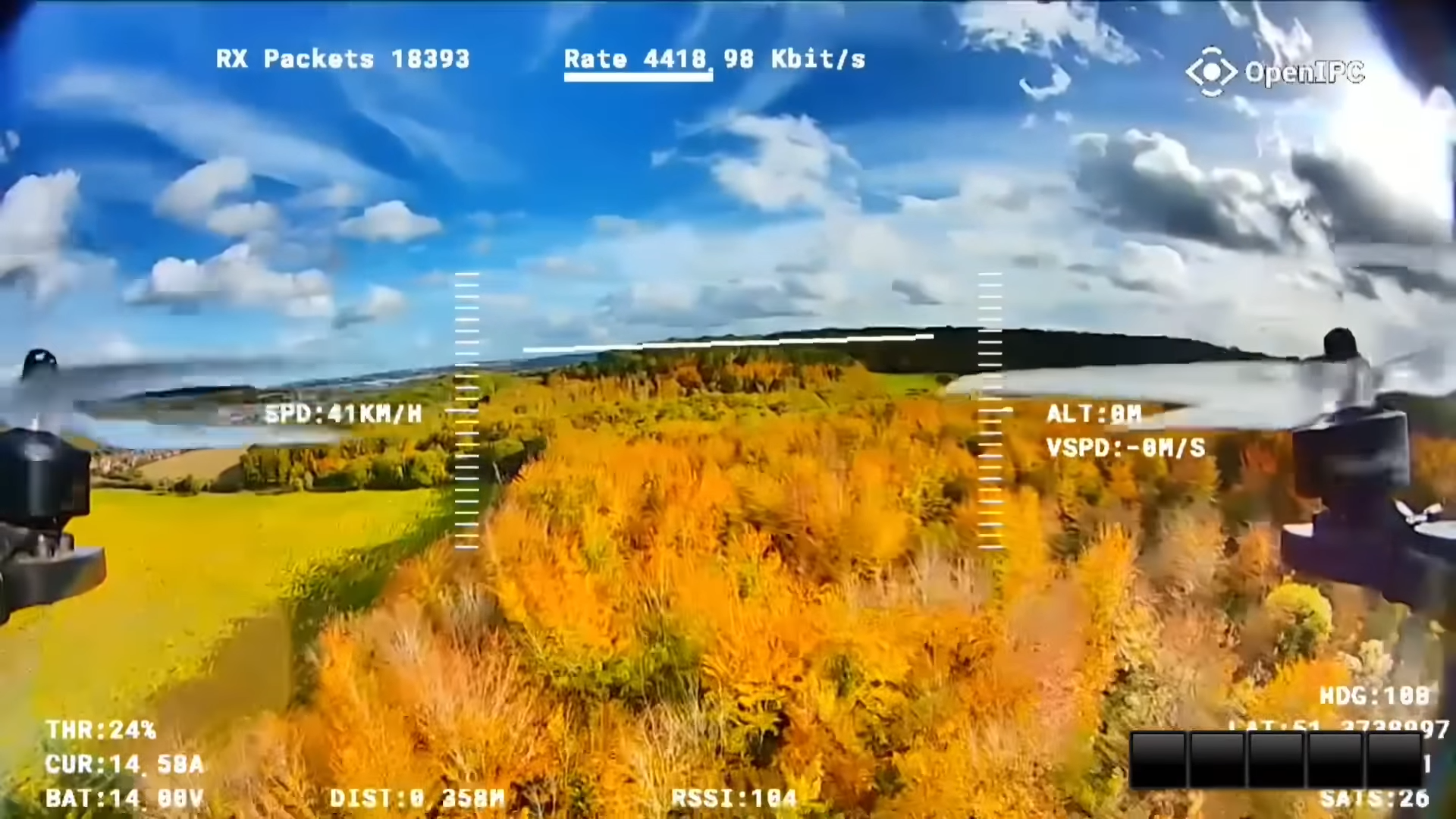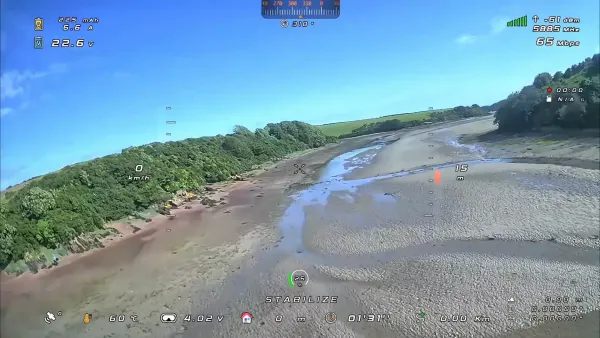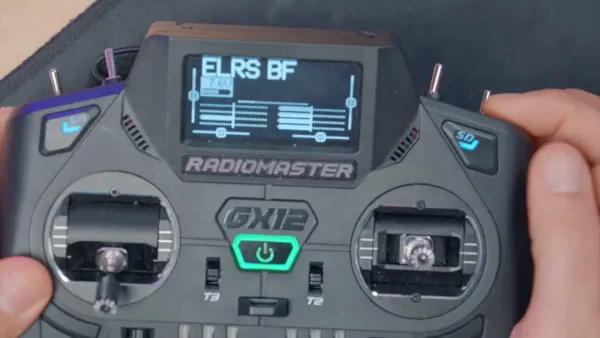In the ever-evolving world of drones, the race is on for the next big thing. Amidst this tech revolution, WFB-NG emerges as a shining beacon. An advanced extension of the famed wifibroadcast, this open-source digital FPV and telemetry system is laser-focused on one mission: slashing latency to deliver real-time, seamless connections. But wait, there's more to the story. Enter OpenIPC, an innovative firmware tailor-made for cameras, unlocking capabilities once thought impossible, such as ultra-high frame rates pivotal for FPV. And just to clear the air, while both these groundbreaking projects are making waves in the drone community, they're distinct entities, separate from OpenHD, another remarkable venture designed for long-range video, telemetry, and RC control. Dive in as we unravel the nuances of these projects and the future they're shaping.
Lets first start by talking about WFB-NG,
WFB-NG
WFB-NG, an acronym for "WiFi Broadcast - Next Generation," represents the future of long-range packet radio links. Drawing its foundation from raw WiFi radio technology, this system is meticulously designed to bridge a drone and its ground station with a low-latency, high-definition video and telemetry link. This lets you hook up a Raspberri-Pi (the devs use NanoPI NEO2 due to size), to a WiFi module Realtek RTL8812au) to complete their Digital FPV Air unit.
The Mechanics Behind WFB-NG:
- Monitor Mode Activation: WFB-NG commands the WiFi cards to switch to 'monitor mode'. In this state, the cards can freely send and receive any packets without the need for association or waiting on ACK packets.
- RTP Mapping: Instead of serializing data into a continuous byte stream, WFB-NG maps the Real-time Transport Protocol (RTP) directly to IEEE80211 packets. This 1:1 mapping ensures latency remains minimal.
- Smart FEC Integration: With its Forward Error Correction (FEC) feature, any packet in the FEC pipeline that's uninterrupted is instantly relayed to the video decoder.
- MAVLink Telemetry: WFB-NG isn't just about video. It supports bidirectional MAVLink telemetry, perfect for both MAVLink up/down and video downlink transmissions.
- IP-over-WFB Tunnel: Expanding its utility, WFB-NG also facilitates the transmission of standard IP packets over its link.

Tailored for FPV (First Person View) Drone Piloting:
The essence of WFB-NG lies in its FPV-centric design. Here's why it stands out:
- Low-Latency HD Transmission (as low as 30ms): For FPV pilots, every millisecond counts. WFB-NG ensures video transmission is not just high-definition but also swift and seamless.

- Advanced Features: With capabilities like automatic TX diversity (selects the best TX card based on RX RSSI), stream encryption, authentication, and distributed operation, it's a complete package.
- Enhanced On-Screen Display (OSD): Compatible with diverse systems like Raspberry Pi or others supporting GStreamer, its OSD can adapt to any screen resolution and even manage aspect correction, especially when transitioning from PAL to HD.
- Integration with Systems like OpenIPC: The brilliance of WFB-NG is its versatility. When integrated with platforms like OpenIPC, there's no need for airborne systems like Raspberry Pi. A supported IP camera paired with a regular WiFi module is all you need for a digital HD FPV experience.
For those eager to dive deeper or offer feedback, their GitHub page welcomes all enthusiasts.
Now that we have a basic understanding of the video/telemetry link, there is another critical aspect of the FPV system, an OpenIPC compatible camera.
OpenIPC
OpenIPC is an open-source firmware, tailored specifically for IP cameras. With a vision to replace the often unsupported, closed, and vague firmware that vendors commonly pre-install, OpenIPC offers transparency and broader compatibility. Catering to a diverse range of processors, it doesn't just stop at replacing conventional firmware. OpenIPC extends its prowess to features like streaming directly to platforms like YouTube and Telegram and even supports external cloud storage.
Why OpenIPC is the Gold Standard for FPV
The pairing of OpenIPC with WFB-NG (WiFi Broadcast - Next Generation) offers an unparalleled FPV experience. Here's why:
- Native H265 Encoding Support: OpenIPC's compatibility with specific cameras, notably the gk7205v200/300-IMX307/355, allows for native H265 encoding. This advanced encoding significantly elevates the FPV system's performance. It ensures higher quality video streams at considerably reduced bitrates when juxtaposed with older codecs. This gives your onboard air unit RPI more CPU for other functions.
- High-Definition Video Transmission: The clarity of visuals is paramount in FPV systems. OpenIPC ensures the video feed from the camera is nothing short of high-definition brilliance.
- Real-time Low-Latency Link: In the world of FPV, time is of the essence. The combination of OpenIPC with WFB-NG promises a video link with minimal latency, guaranteeing real-time video feeds essential for precise navigation and control.
- A Wallet-Friendly Solution: OpenIPC's compatibility with a myriad of affordable IP cameras makes it a cost-effective alternative for those seeking superior FPV systems without breaking the bank.
- Unparalleled Flexibility: Why settle for factory settings when you can customize? OpenIPC hands the reins to users, allowing them to tweak the camera's features and settings to perfectly align with their unique FPV requirements.
- Seamless Integration with WFB-NG: It's a match made in tech heaven. When OpenIPC joins forces with WFB-NG, a raw WiFi radio-based long-range packet radio link, the result is a unified transmission channel. This channel efficiently transmits high-definition video, 2-way UAV telemetry, audio, and even RC control signals.
With OpenIPC, the future of IP camera firmware is not just open but also innovative. By bridging the gap between affordability, quality, and customization, it's setting new standards in the FPV domain.
Where To Learn More?
MarioFPV is one of the youtube channels who is sharing is progress on this project, so I suggest you follow him to find out more. You can also join the OpenIPC FPV System Facebook group
For example, for the VRX in the video above, he uses the following items:
On the air side:
- This FPV Camera
- This Wifi Module
And on the goggle, ground side:
- This VRX Module
- This Wifi Module
This is still early stages of the project, and with limited documentation and guides its ideally best to hackers and developers but the future is exciting to actually get affordable and fully open source systems, just compare it to how ExpressLRS is leading the way when it comes to radio control links. Perhaps one day we will have a fully open source HD FPV system that exceeds even that of DJI.






